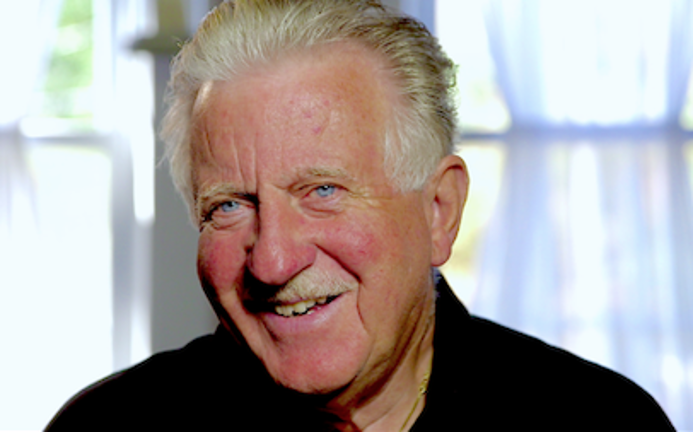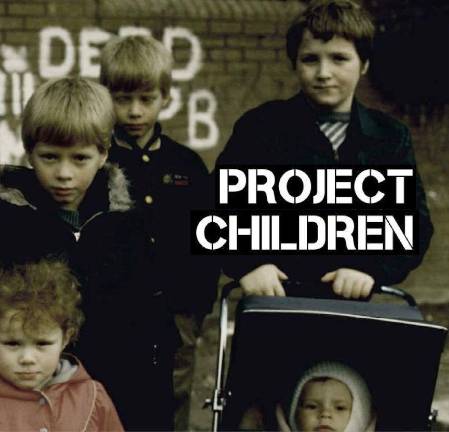Project Children marks 50th anniversary
Greenwood Lake. Organization’s archives placed at the Peace Centre in Northern Ireland.


The Troubles. No two words carry quite the same impact for Irish Americans.
But while most of them shed tears for their homeland, sent donations and lit candles, Denis Mulcahy took action.
From the late 1960s to the Good Friday accords on April 10, 1998, Northern Ireland was torn by violence and terror.
Mulcahy, along with his brother Patrick, both New York City police officers who had emigrated from County Cork in 1962, “reasoned that if Protestant and Catholic children could spend time in an environment that wasn’t toxic with war, they would be less likely to hurl bombs at each other,” according to the website of Project Children, the organization formed from that belief.
So the brothers decided to welcome children whose lives were disrupted and endangered in Northern Ireland to the safety of Greenwood Lake, N.Y.
The first year, 1975, they brought three Catholic and three Protestant children here.
Soon, 900 children a year were coming over. By the time the summer program ended in 2015, 23,000 children had experienced a respite from The Troubles.
Archives at Peace Centre
For the 50th anniversary of Project Children’s founding, Mulcahy went to Northern Ireland this month for the establishment of Project Children’s archives at the Peace Centre.
The center was established to tell the story of The Troubles and ensure that nothing like that could happen again.
He is very pleased that Project Children finally has a home for its papers.
The brothers started out with very little funding but great organizational skills. Some local organizations chipped in and, eventually, the funding sources grew.
Children as young as 9 came over to escape the violence in their homeland. The Troubles were so bad that parents allowed their young children to cross the ocean because they knew they would be safe and have a peaceful summer.
Many of the families who took them in lived far from Greenwood Lake. Some were across the country in Montana, Colorado and Idaho.
Because the project was based in Orange County, N.Y., many host families lived in the Hudson Valley or in northern New Jersey, Mulcahy said. New Jersey hosts also lived along the coast as far south as Cape May.
Amazing stories
Some of the children returned to visit the host families or emigrated when they became adults. Mulcahy has heard from many of them.
A young woman in an Aer Lingus uniform once knocked on his door to tell him that she had been hosted by Project Children 20 years earlier, he said. “There are a lot of amazing stories.”
He still gets emails from some who came over as children.
A few returned to the U.S. for high school and college. Mulcahy said a boy who stayed with his family at age 11, met a 9-year-old girl during his visit, and said he was going to come back and marry her. They now live in Binghamton, N.Y., and have celebrated their 25th anniversary.
The story of one of the children, Siobhan McNulty, was chronicled in a children’s book, “Siobhan’s Journey: A Belfast Girl Visits the United States,” in 1992. Author Barbara Beirne penned the story of the girl’s six weeks in the U.S. in a book aimed at third- and fourth-graders.
Although the summer visits ended, Mulcahy wants to keep Project Children’s history alive. “It’s never outdated,” he said, noting the value of future generations understanding The Troubles.
He laments that people don’t discuss The Troubles more with young people.
Documentary in 2016
Many of the stories were told in a documentary, “How to Defuse a Bomb, the Project Children Story.” It was directed by Des Henderson, a British director made other documentaries about the conflict.
“How to Defuse a Bomb” was made in 2016. Mulcahy was not particularly fond of the title, although he acknowledged that by bringing Protestant and Catholic children together, Project Children was working to defuse their hatred and suspicion.
Because he was a member of the NYPD bomb squad, the metaphor made him uncomfortable at first.
Screenings of the documentary are being held in Ireland and the U.S. this year to mark the 50th anniversary, Mulcahy said. Assisting with them are Catherine Flood and Linda Crouston of Crouston Flood, an executive consulting, recruiting and events firm that works in the U.S. and Ireland as well as in other countries.
The documentary was narrated by actor Liam Neeson, who was born in Ballymena, Northern Ireland, in a Catholic home. The town was not a hotbed of The Troubles, he has said in interviews, but he remembers his parents keeping him and his sisters close to home each July 12, Orange Day, when their Protestant friends were celebrating the victory of William of Orange.
Henderson also made the documentary “The Lost Boys of Belfast” in 2023, which explored the story of two boys who disappeared on their way to school in 1974.
Internship program
The end of the summer program was hardly the end of Project Children, Mulcahy explained.
An internship program was started in 1995 for young college students. They immerse themselves in American culture by living and working across the pond, he said.
The students begin each summer by working together on a project for Habitat for Humanity and worked on various projects throughout their stay.
In addition, Project Children works with the Celtic Irish American Academy in Galway to provide high school students with an immersive cultural experience.
The academy also welcomes European and Canadian high school students for a week each July. They stay with host families and participate in many learning activities to explore their Irish heritage.
In 2018, the Mulcahy Scholarship was founded in tribute to the brothers to enable more students to attend the academy.